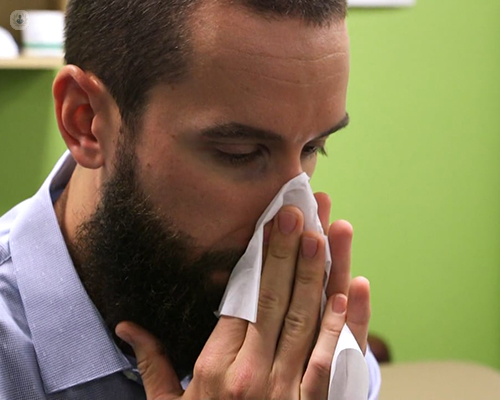Tear duct surgery: an all-you-need-to-know expert guide
Autore:Tear duct surgery is an effective, minimally invasive surgical option for people who require their blocked tear ducts to be reopened following blockage between the eye socket and nose.
In our latest article, highly experienced Sheffield-based otolaryngologist, Mr Miran Pankhania provides an expert overview of what exactly tear duct surgery entails and who should consider undergoing the surgery.

What is tear duct surgery?
Tear duct surgery, known as DCR (or dacryocystorhinostomy) is a minimally invasive, endoscopic procedure that is performed in order to reopen blocked tear ducts. It is usually performed as a general anaesthetic (patient being asleep) procedure but can also be done under a local anaesthetic.
The surgery is performed almost entirely through the nose with tiny instruments to unblock the tear ducts by removing a small amount of bone as well as the underlying blockage. Once the tear duct is unblocked, silicone tubes need to be inserted to prevent them from closing over with scar tissue. Typically, this stent can be removed three months after the initial surgery without the need for anaesthetic, after which the symptoms should disappear.
Who is a candidate for tear duct surgery?
Tear duct surgery is commonly performed in older people. They may have had a number of infections in the past leading to the blockage. Sometimes, other surgery or injuries to the face can also have caused blockage. It can be undertaken in anyone with a watery eye or with significant infections to the tear duct system.
How do you know if your tear ducts are blocked?
Patients with blocked tear ducts will typically complain of needing to wipe their eyes to get rid of the tears which cannot drain through the normal channels. Most people notice their symptoms are worsened by changes in temperature, in windy conditions, or when driving or shopping, potentially making routine tasks difficult if not dangerous.
Others may experience pus leaking from the corner of their eye, or get swelling and abscess formation nearby. This can become embarrassing and can significantly affect one’s self-esteem.
Often, an optician or an eye surgeon may have seen you already and recommended this form of surgery. They may also have tested your tear ducts by applying anaesthetic to the eyes and trying to flush salty water or yellow dye through.
What is the recovery time?
Recovery time is fortunately very quick and there is not much pain after surgery. The surgery leaves very little trace beyond a small silicone tube in the corner of the eye which is almost invisible. There is normally no scarring nor bruising. You may have some blood-stained snot for the first week.
The stent can sometimes stop tear fluid getting into the nose while it is in place, which commonly leads people to think that the surgery has not worked immediately. The stent is also secured in the nose, and so some people notice nasal blockage after surgery.
This is to be expected until the stent is removed, but the benefits are worth the wait. The stent needs to remain in place for three months to ensure that the blockage does not recur. During this period of time, you may be given steroid-based eye drops, and sometimes nasal spray to improve the chances of success which are as high as 95 per cent.
Is it safe for children?
Tear duct surgery is rarely needed in children. However, it is still technically possible, particularly in those in whom tear ducts may not have formed properly, or in whom other procedures by eye surgeons have not been able to unblock the underlying problem.
Mr Miran Pankhania is an extremely well-regarded and experienced otolaryngologist who specialises in the diagnosis and treatment of nose, ear, throat and eye-related medical conditions. Visit his Top Doctors profile today to book a consultation with him.


